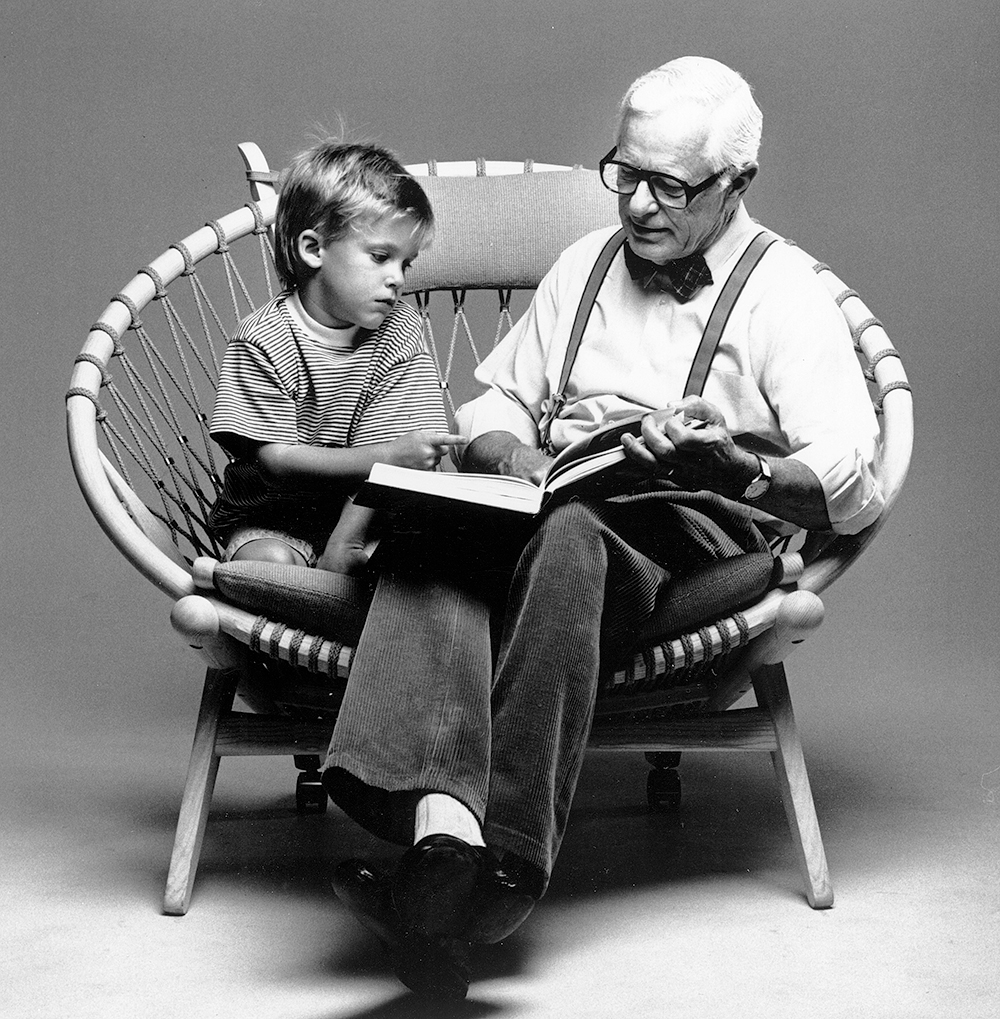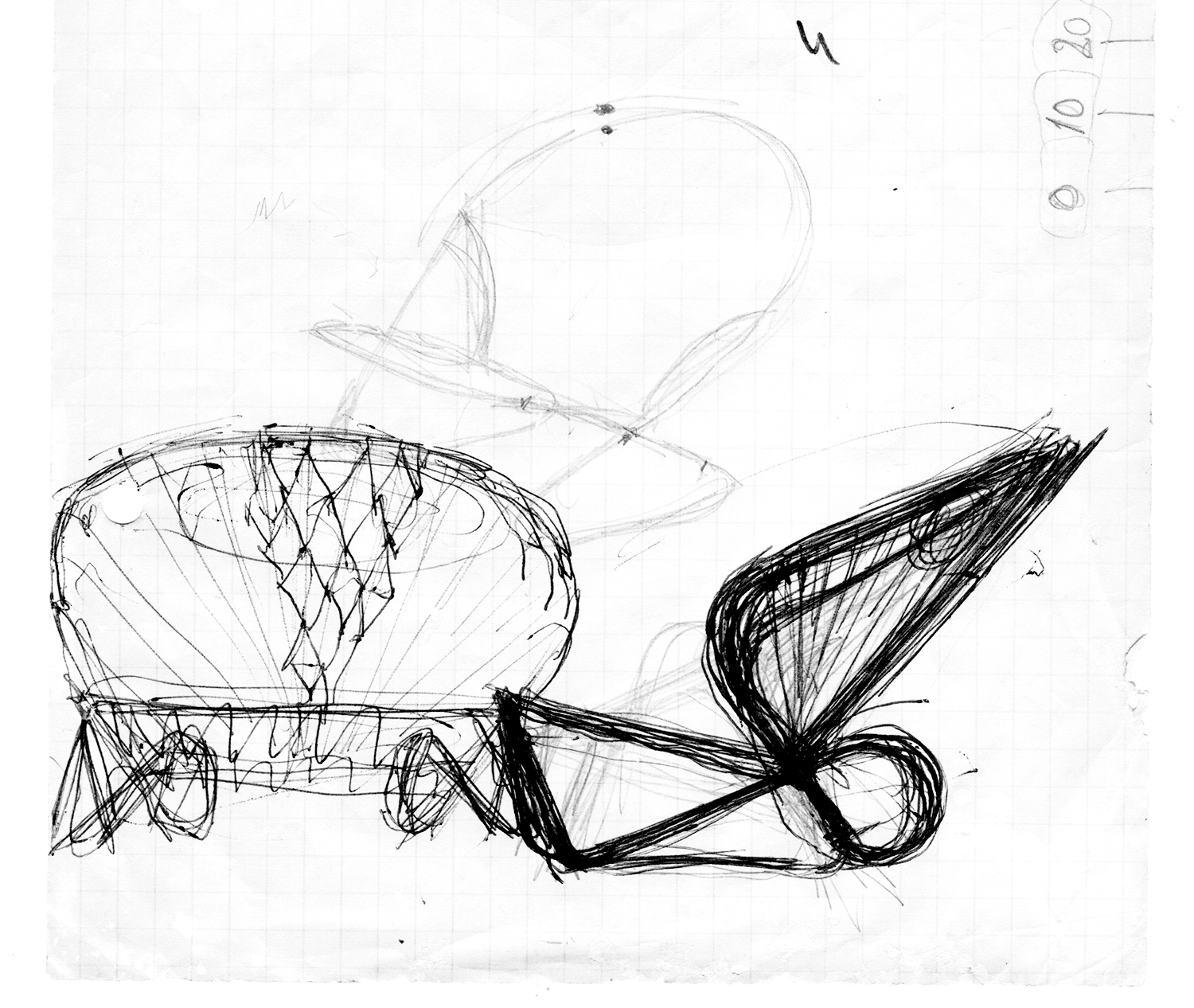
Throughout most of his career Wegner was pursuing the basic idea of making an easy chair based on a ring. This notion resulted in a number of different chair designs that merely existed as sketches and scale models.
At the age of 72, Wegner concluded over forty years of meditating on this simple thought by finishing the Circle Chair.

This was the last of the big visionary design projects of Wegner and the concept and complexity of the chair demanded the most accurately measured construction drawings and a highly innovative production setup.
Despite Wegner’s bold and daring ambition, the Circle Chair is one of his most accommodating easy chairs capable of servicing all members of a family in comfort.

Wegner’s first sketches bear a clear relationship to the Peacock Chair but later variations became more geometrical and made use of steel and flag line. The distinctive pattern created by clamping the flag line with metal clips appears on sketches drawn in the early 1960 and the first drawings of the Circle Chair are dated 1965.



Wegner proposed making it in steel as he doubted that it would be possible to produce such a large ring in wood. In numerous experiments conducted in the workshop after normal working hours, Wegner concluded that a steel construction was unworkable.
The flag line could not easily be held in place when wrapped around the metal ring while simply cutting slots to secure it to a wooden one would solve this problem.
One Sunday afternoon when Ejnar and his girlfriend Hanne Kjærholm entered the workshop to find Wegner frustrated by the obstacles to his steel experiments, the obvious question was, “Can this be made of wood?”
Upon giving up on the steel construction for rational reasons, Wegner re-engineered the design keeping all basic angles and measures but creating a wooden construction that would solve the issue of fixing the rope on the ring.
The ring itself had to be very strong and stable, so in order to succeed PP had to build a special moulding machine for gluing 11 thin layers of solid wood into a ring formation.

 Wegner presented the prototype of his wooden Circle Chair to HRH Queen Ingrid of Denmark at the 1986 Cabinetmaker's Guild Autumn exhibition.
Wegner presented the prototype of his wooden Circle Chair to HRH Queen Ingrid of Denmark at the 1986 Cabinetmaker's Guild Autumn exhibition.The aim was set to finish a prototype of the new design and present it at the annual Cabinetmaker’s Guild’s Autumn Exhibition, but the task was comprehensive, and after many days and nights of hard work the chair was finished on the morning of the exhibition opening.
Ejnar placed the prototype in the back of his car and headed for Copenhagen. Unfortunately, his car broke down on the highway, but a friendly farmer with a load of potatoes stopped to offer his help. Being pressed on time Ejnar asked the farmer to take the prototype to the exhibition. They quickly loaded the prototype on top of the potatoes, and the farmer drove off leaving Ejnar with his broken car realising that he did not have a clue as to who the friendly farmer was. Lucky for Ejnar the farmer kept his word and delivered the chair to the exhibition as promised.
The picture shows Wegner presenting the prototype of the wooden Circle Chair to HRH Queen Ingrid of Denmark at the 1986 Cabinetmaker’s Guild’s Autumn Exhibition opening. It stands among the most successful and innovative design experiments conducted at PP Møbler.